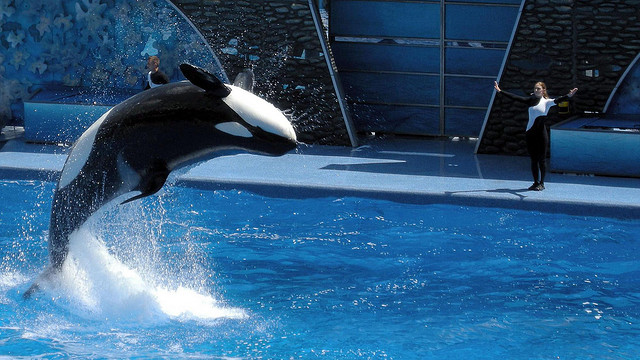
(Milan Boers/Flickr)
State Assemblyman Richard Bloom (D-Santa Monica) is determined to end the use of orcas for water shows in California, where the whales jump through hoops, for example, or carry trainers on their backs.
Bloom has just introduced legislation that would ban people from keeping orcas in captivity for entertainment purposes, while still allowing research with the animals. The bill also bans the breeding of the whales in captivity and requires that orcas currently held for entertainment purposes be returned to the wild if possible, or to a sea pen when not.
SeaWorld, a major player in the marine animal park industry with parks in San Diego and Orlando, Florida, is readying for a battle over the proposal. The water park recently hired a lobbyist and issued a written statement decrying Bloom’s bill. The statement argues the bill is being pushed by “extreme animal activists” some of whom “partnered with PETA in bringing the meritless claim that animals in human care should be considered slaves under the 13th Amendment to the U.S. Constitution — a clear publicity stunt.”
The statement asserted that SeaWorld engages in “business practices that are responsible, sustainable and reflective of the balanced values all Americans share.”
KQED’s morning talk show Forum recently provided a preview of the debate, in a program featuring Dave Phillips, executive director of the Earth Island Institute and Billy Hurley, past president of the Alliance of Marine Mammal Parks and Aquariums.